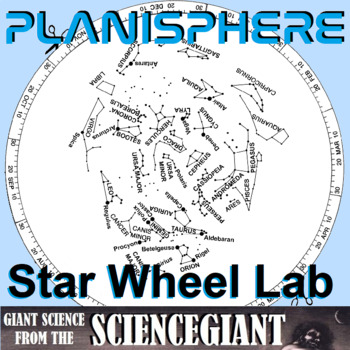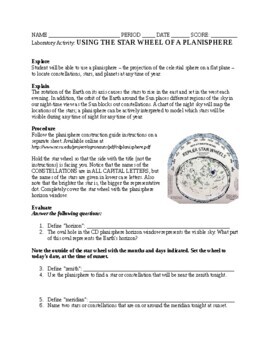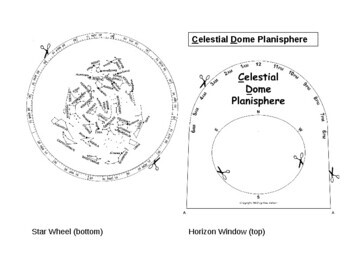Planisphere Lab Activity: A Star Wheel for Constellation Exploration
- Word Document File
What educators are saying
Also included in
- Teachers use the Strategic Instruction Model (SIM) Concept Enhancement Routines to transform abstract main ideas and key topics into a concrete representation that helps students think about and talk about the key topic and essential related information. SIM is about promoting effective teaching andPrice $49.70Original Price $71.00Save $21.30
Description
Inexpensive and ingenious! Planispheres are a unique tool for learning astronomy: a make-it-yourself star map, adjustable for any time of night in any month of the year. They are designed to show the position of prominent constellations in the night sky. It's a low-tech way for Ss to learn the location (and thus give meaning to key vocabulary terms) of the horizon, zenith, meridian, ecliptic and celestial equator on the celestial sphere.
This lab includes two types of planispheres: one for standard 8.5 x 11 inch photocopier paper, and one for photocopying and glue sticking on to old compact discs. There are 22 questions and an optional extra credit activity. Lab activities are in Microsoft Word .doc form so that Ts can customize the discussion to fit the needs of Ss. To use the star wheels, Ss just have to:
- Set date and time
- Note which horizon a constellation is closest to and put that horizon near the bottom.
- Remember constellations higher in the sky are closer to the center of the map.
Kepler Star Wheels reproduced with permission from NASA Kepler Mission and University of California, Lawrence Hall of Science:
- Includes masters for photocopy and assembly instructions
- shows where in the sky the NASA Kepler orbiting observatory pointing.
- Has sky positions of 17 naked-eye stars (brighter than magnitude 5) with exoplanets discovered as of August 2012 from http://exoplanets.org.
- Includes three star wheel:
- one with coordinate grid for plotting additional exoplanet stars
- one without grid a simpler look that is easier to read
- one without constellations lines or names (invent your own asterisms)
- Includes two holders: one for latitudes 30°-50° North and one for latitudes 50°-70° North
- Goes with other available Lawrence Hall of Science's Star Wheels including stars of the southern hemisphere sky, and wheels written in Portuguese, Japanese and Icelandic languages. (other star wheels not included in the resource)
This lab is classroom tested to help students with the following Florida Next Generation Sunshine State Standards in Science. Students Will Be Able To (SWBAT)
- SC.912.N.3.5 Describe the function of models in science, and identify the wide range of models used in science.
- SC.912.E.5.2 Identify patterns in the organization and distribution of matter in the universe and the forces that determine them.
- SC.912.E.5.5 Explain the formation of planetary systems based on our knowledge of our Solar System and apply this knowledge to newly discovered planetary systems.
- SC.912.E.5.10 Describe and apply the coordinate system used to locate objects in the sky
Related Resource
- Question Exploration: What Are Constellations and Asterisms?
#StayGiant and stay up on my new resources and STEM news. Look for the green ★ star near the top of any page within my store and click "FOLLOW". Or follow @TheScienceGiant Twitter. Stand on The Shoulders of Giants, and together we'll see further, inspire students, and enlighten inquisitive minds!






